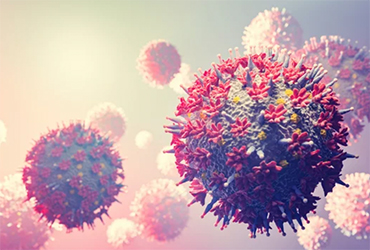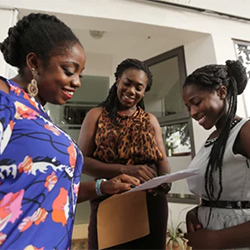By Landon Gray
Although the risk for death during the omicron wave of COVID-19 fell dramatically for people without HIV, the risk for people living with HIV (PLHIV)—especially those with low CD4 counts—saw only a modest decrease, according to Meg Doherty, MD, PhD, the director of the Department of Global HIV, Hepatitis and Sexually Transmitted Infections Programmes at the World Health Organization (WHO), who spoke at a media briefing during IAS 2023, the 12th IAS Conference on HIV Science, held in Brisbane, Australia (abstract OALBC0605).
Data are limited regarding the impact of the SARS-CoV-2 variants on mortality in people with HIV, she said, so researchers analyzed data from the WHO Global Clinical Platform, which included more than 820,000 hospitalized children and adults from 42 countries. They wanted to evaluate the association between HIV coinfection and in-hospital mortality during the SARS-CoV-2 pre-delta, delta and omicron variant waves, as well as assess risk factors for mortality among PLHIV.
During the pre-delta variant wave, PLHIV had a 54% higher risk for death (adjusted hazard ratio [aHR], 1.54; 95% CI, 1.42-1.68) than those without HIV. People with HIV had a 56% higher risk for death during the delta wave, and a 142% higher risk during omicron, than those who did not have HIV.
The mortality rate declined significantly from 21%d (delta wave) to 7.9% (omicron wave) among the HIV-negative population. However, there was only a modest decline observed among PLHIV, from 25% to 18% during the delta and omicron waves, respectively. The reduction in mortality was even smaller among people with CD4 counts less than 200 cells/mm3.

“The variant periods were defined as the time frame from which more than 90% of the reported cases were associated with a specific variant,” Dr. Doherty said. “The overall mortality rate was 19% for people without HIV and 23% among [PLHIV]. And these rates were 22% and 24%, respectively, during the pre-elta wave; 20% and then 23% during the delta wave; and interestingly, 9.8% and 19.6% during the omicron wave. [This shows] the difference in mortality from those who are living with HIV and those without.”
Severe/critical COVID-19 at admission and CD4 counts of 200 cells/mm3 or lower were common risk factors for mortality across the three SARS-COV-2 variant waves among PLHIV.
Vaccination helped to reduce the mortality risk among PLHIV. Those who had received at least one dose of COVID-19 vaccine had a 39% lower risk for death (aHR, 0.61; 95% CI, 0.40-0.92) during the delta variant wave and a 38% lower risk during omicron than unvaccinated individuals.
There is a need to increase HIV testing and treatment for PLHIV who are unaware of their serologic status because they may be at risk for worsening outcomes if they get COVID-19, the researchers said.
“Overall, these findings help highlight the need for implementing WHO guidelines for testing and treatment for HIV at every opportunity, and providing a booster vaccine for populations most at risk for severe COVID-19 outcomes, including people living with HIV,” Dr. Doherty said.




